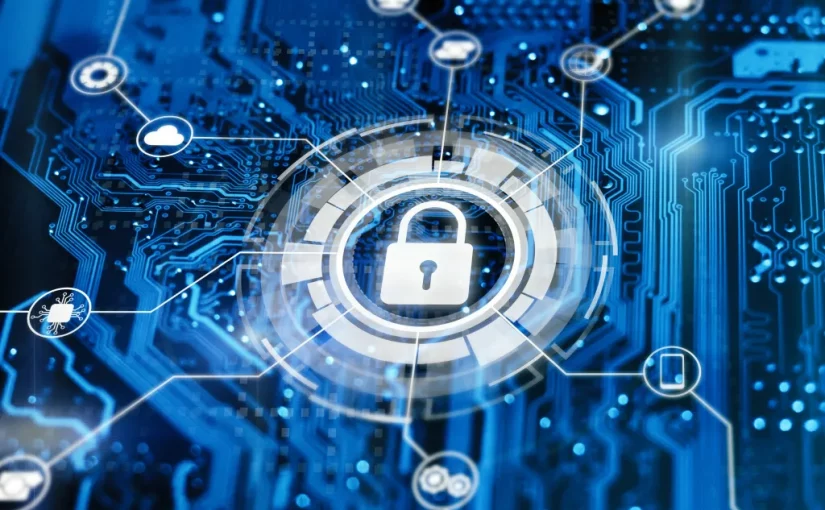Cyber security requires all methods to protect users’ information and organizational database. As attack actors get sophisticated in their activities, they are poised to secure vital details.
While many forms of security exist, one that proves highly recommendable is end-to-end encryption. For cybercriminals, attacking an encrypted file is too much work. The importance of encryption is gold. It provides a standard for securing communication.
What is End-to-end Encryption?
End-to-end encryption is a system of communication that allows just the communicating user to read messages. It implies that data get turned into something that others cannot read. Many communication services (with regards to WhatsApp and Zoom) saw the need for this security measure.
The pros of this are that it sends encrypted messages to a device that decrypts it. The encrypted message travels in this format, making it difficult for even the communication provider. The primary idea is to restrict transmitted data from reaching anyone but the recipient. This way, communication is private.
In addition, modern encryption works so that messages become garbled when decrypted by hackers. It makes alteration impossible and ensures the integrity of communication.
End-to-End Encryption for IOS
IOS users have the privilege of protecting their iMessage and Facetime conversations. For anyone to access your communication, they need your passcode. The design for both features makes it impossible for anyone or even Apple to read your messages. Also, Facetime or Group Facetime calls don’t get stored on the server.
However, end-to-end encryption requires two-factor authentication for IDs and Passcode. It doesn’t cover other information on the device. Encryption only protects data in transit and the ones stored on the server.
End-to-End Encryption for Androids
The recent move to end-to-end encryption on Android devices was a welcome development.
Companies like Google and WhatsApp gave users a new form of confidence. With this feature, the companies or third parties have no access to text and media content.
All that’s required is for both parties to have Chat features and wifi. The availability only applies to web apps but not SMS or MMS. As soon as the criteria get met, the security layer automatically becomes active for all conversations.
End-to-end encrypted data on most iOS includes
- Health and home data
- iMessage and FaceTime
- iCloud Keychain
- Screen Time
- Siri information
- Payment information
- Wifi Passwords
Is Cloud Encryption a Possibility?
Users back up a lot of data in the cloud for security and storage purposes. Most cloud providers use best-in-class security to store data. Subsequently, they do not provide end-to-end encryption for cloud storage. They need access to customers’ data. They can move files in the server, making them accessible from different devices. Since the idea is to make you feel safe, the features don’t come with cloud storage.
Can Cloud Storage be used with End-to-end Encryption?
The answer is yes, but service providers focus on transparency and respect for users’ privacy. The ones with the end-to-end features prove challenging to use. For example, they provide an encryption key that gives you control over who sees your data. Unfortunately, some don’t back it up securely. Users vying for this feature need to seek vendors that provide substantial security. Otherwise, they stand the risk of losing their access.
When using multiple cloud storage providers, ensure the platform supports integration for a seamless transition. To be 100% secure, make do with the cloud storage encryption of data on the server-side. Most clouds do this and then write it on a disk.
Other options available includes
- Customer Managed Encryption Keys
It allows users to create encryption keys and store them as software keys.
- Client – side Encryption
Some data arrive in the cloud already encrypted and get encrypted by the server-side.
- Customer- Supplied Encryption Keys
Here, customers create and manage their encryption keys that serve as additional layers for storage.
- Server-Side Encryption:
It occurs after the cloud storage receives the data but not before it gets written on the disk.
Subsequently, it’s best for all data to be managed by the users for maximum security. On the alternative, a local backup is highly recommendable. Just bear in mind that there’s nothing like a perfect security system.
Why do users need end-to-end encryption?
The activities of hackers, cybercriminals, and attackers make the use of end-to-end encryption a must. If all data must remain safe, there’s no need to think twice about the feature on your devices.
- Authentication
Encryption proves the originality of a website and its server. Users relax and trust that they do not work with a fraudulent site.
- Regulatory compliance
Most government and organizational policies require websites to keep users’ data encrypted. Therefore, a site with this feature complies with these regulations.
- Privacy and Security
Users get the assurance that their messages are safe with them and the recipients alone. Thus, cybercriminals can’t get access to hack or breach data in transit or otherwise.
Types of End-to-end Encryption apps for IOS and Androids
Most chat apps utilize 256-bit AES enterprise-level encryption. It is considered the best in terms of privacy. There’s an inbuilt semi-encrypted solution in the Google SMS app on default for Android devices. It also provides the same features for Apple. The iMessage has an end-to-end encrypted multi-device system.
Subsequently, most messaging platforms offer the feature within the IOS and Android ecosystems. When a data breach occurs, all leaked conversations remain secured. Here’s a list of apps to install on your device that comes with end-to-end encryption.
- Facebook Messenger
It works for both mobile devices and can get installed for free.
- Google Messenger
It works for Android, and it’s free.
- Telegram
It’s installed on iOS, Android, and macOS for free.
- Dust
Android and iOS- free
- Apple Messenger
IOS and macOS –free
- Line
It’s installed on iOS, Android, and macOS for free.
- Signal
It’s installed on iOS, Android, and macOS for free.
- Viber
It’s installed on iOS, Android, and macOS for free.
It’s installed on iOS, Android, and macOS for free.
- Wickr Me
It’s installed on iOS, Android, and macOS for free.
- Threema
Installed on iOS and Android – Paid.


